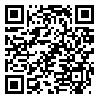Wed, Apr 9, 2025
[Archive]
Volume 4, Issue 1 (Winter 2018 -- 2018)
JCCNC 2018, 4(1): 1-12 |
Back to browse issues page
Download citation:
BibTeX | RIS | EndNote | Medlars | ProCite | Reference Manager | RefWorks
Send citation to:



BibTeX | RIS | EndNote | Medlars | ProCite | Reference Manager | RefWorks
Send citation to:
Sharifi-Heris Z, Amiri Farahani L, Hasanpoor-Azghadi S B. A Review Study of Diaper Rash Dermatitis Treatments. JCCNC 2018; 4 (1) :1-12
URL: http://jccnc.iums.ac.ir/article-1-159-en.html
URL: http://jccnc.iums.ac.ir/article-1-159-en.html
1- Department of Midwifery and Reproductive Health, Faculty of Nursing and Midwifery, Iran University of Medical Sciences, Tehran, Iran.
2- Department of Midwifery and Reproductive Health, Faculty of Nursing and Midwifery, Iran University of Medical Sciences, Tehran, Iran. ,amirifarahani.l@iums.ac.ir
2- Department of Midwifery and Reproductive Health, Faculty of Nursing and Midwifery, Iran University of Medical Sciences, Tehran, Iran. ,
Abstract: (5372 Views)
Background: Inflammation caused by diapers is one of the most common skin diseases in infants and children all over the world. Among the current therapies, modern chemical medicines are the most common ways of therapy despite their potential risks. In the present study, a variety of available chemical and complementary therapies are presented to facilitate the selection or further research on the range of available treatments with no or fewer side effects.
Methods: Published articles on diaper dermatitis were searched in databases and search engines, including Magiran, Irandoc, SID, Ovid, PubMed, Google scholar, ScienceDirect, and IranMedex from 2010 to 2018. Finally, a total of 80 articles out of the 138 related articles were reviewed.
Results: The treatments were divided into two general categories of topical and systemic treatments. Topical treatments included chemical and herbal subcategories. Corticosteroids, antibacterial agents, antifungals, and other medications composed chemical treatments. According to the information obtained from each category, corticosteroids are the most risky and herbal medicine the safest medication. However, herbal and traditional medicines were the most widely-used treatments for diaper dermatitis.
Conclusion: According to the findings, the choice of appropriate prescription and safe treatment for medical personnel and parents of children is limited. Further studies are recommended on traditional medicines that little information is available about them.
Methods: Published articles on diaper dermatitis were searched in databases and search engines, including Magiran, Irandoc, SID, Ovid, PubMed, Google scholar, ScienceDirect, and IranMedex from 2010 to 2018. Finally, a total of 80 articles out of the 138 related articles were reviewed.
Results: The treatments were divided into two general categories of topical and systemic treatments. Topical treatments included chemical and herbal subcategories. Corticosteroids, antibacterial agents, antifungals, and other medications composed chemical treatments. According to the information obtained from each category, corticosteroids are the most risky and herbal medicine the safest medication. However, herbal and traditional medicines were the most widely-used treatments for diaper dermatitis.
Conclusion: According to the findings, the choice of appropriate prescription and safe treatment for medical personnel and parents of children is limited. Further studies are recommended on traditional medicines that little information is available about them.
Keywords: Diaper dermatitis, Traditional medicine, Chemical medicine, Complementary therapy, Alternative medicine
Type of Study: Applicable |
Subject:
Special
Received: 2017/07/10 | Accepted: 2017/10/20 | Published: 2018/02/1
Received: 2017/07/10 | Accepted: 2017/10/20 | Published: 2018/02/1
Send email to the article author
| Rights and permissions | |
 |
This work is licensed under a Creative Commons Attribution-NonCommercial 4.0 International License. |






